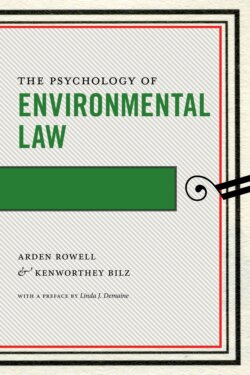Читать книгу The Psychology of Environmental Law - Arden Rowell - Страница 34
Emotional and Motivational Limitations on Dealing with Diffuse Environmental Effects
ОглавлениеAbove we suggested that diffuse impacts will in many cases be difficult for people to “see” and process. But people may also be insufficiently motivated to mitigate harms (or pursue gains). This is a not a cognitive limitation—we might see exactly how we could achieve such goals but just not want to bother. This is especially so where the affected populations are different from us in ways that are easily categorized in social identity terms. Human psychology developed in the context of small, cohesive tribal groups—not large, abstract, global populations—and this developmental history introduces emotional and motivational obstacles to dealing with diffuse environmental effects. Temporal diffusion is part of the problem—we simply may not care about “future us” (or even “our descendants”) to the same degree we care about “present us.” But spatial diffusion is an even bigger concern here, because spatial diffusion triggers identifiable in-group/out-group dynamics and the problem of generating sympathy for others.
